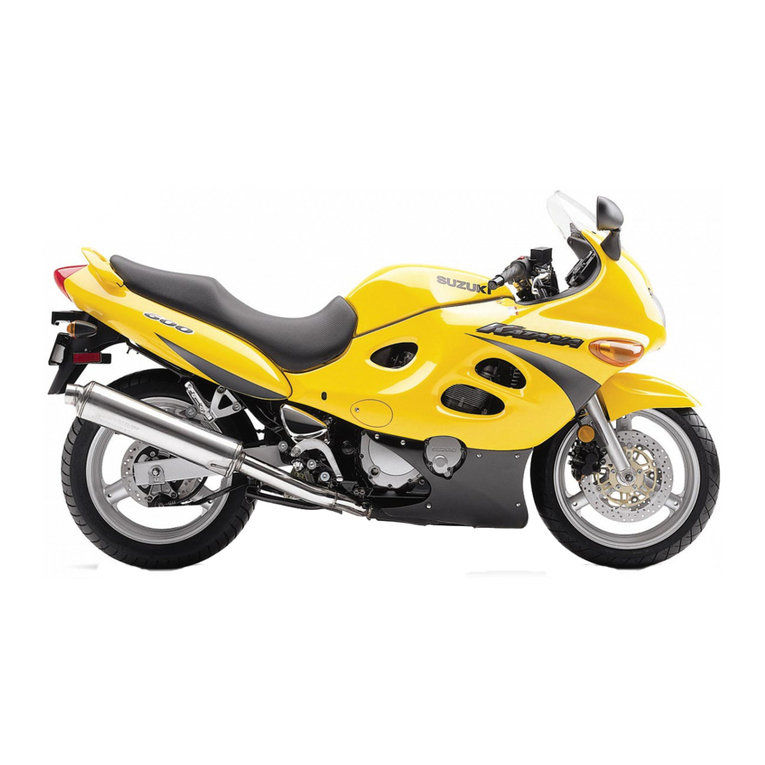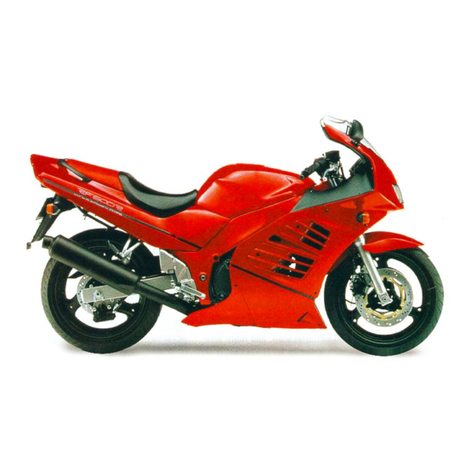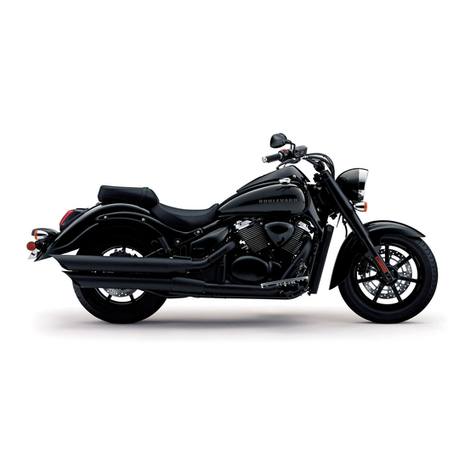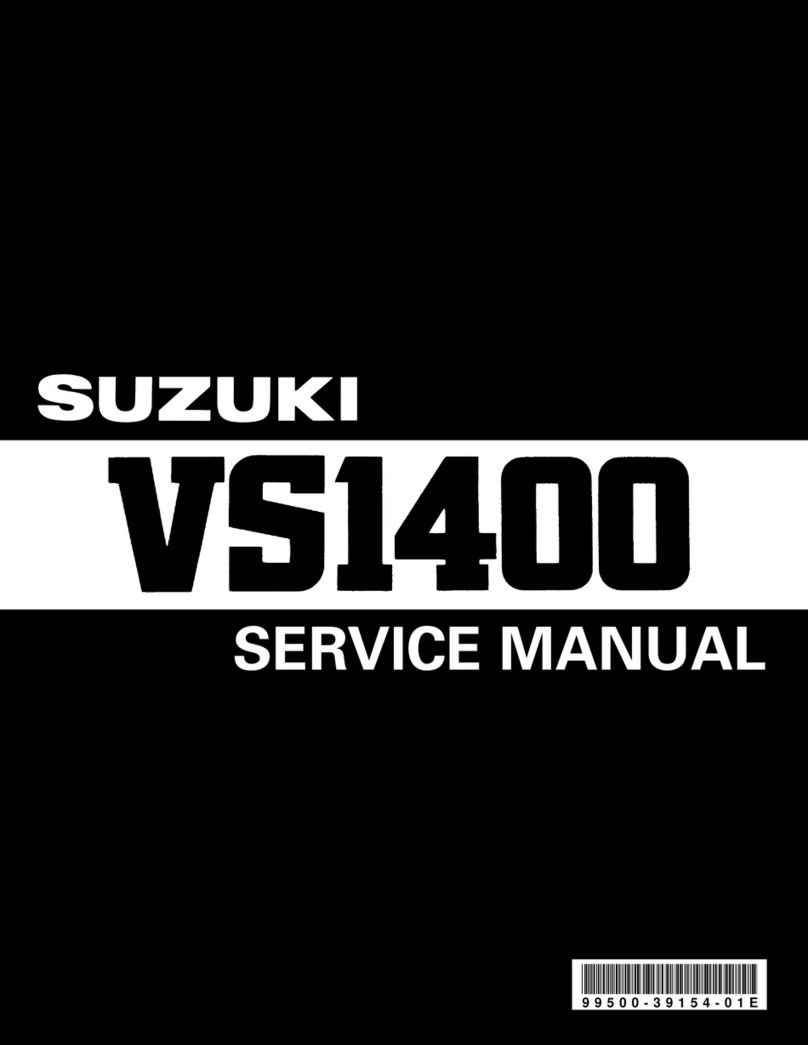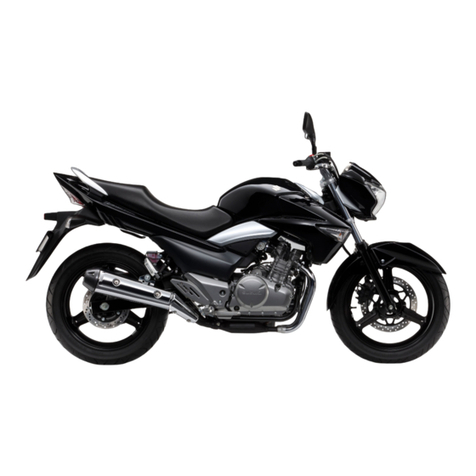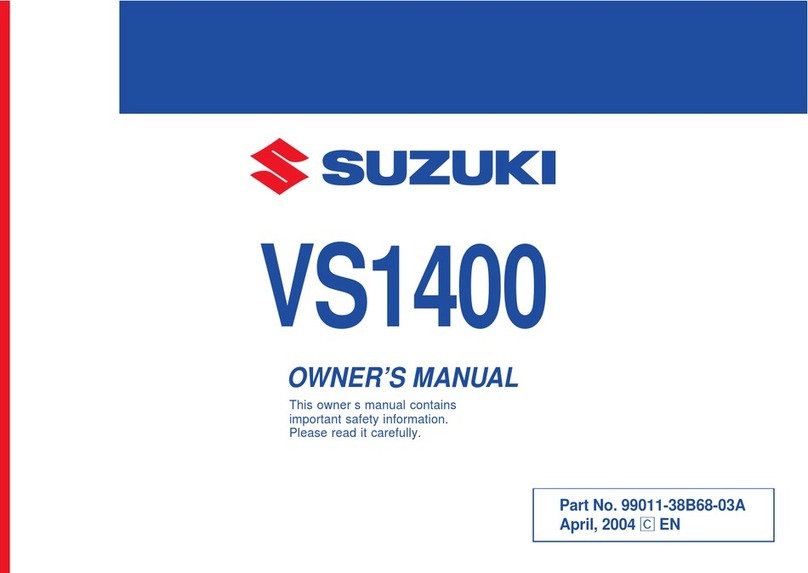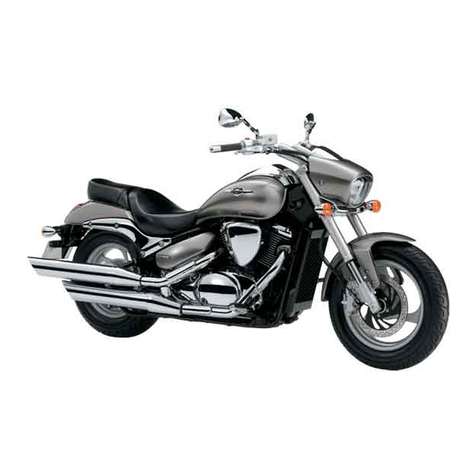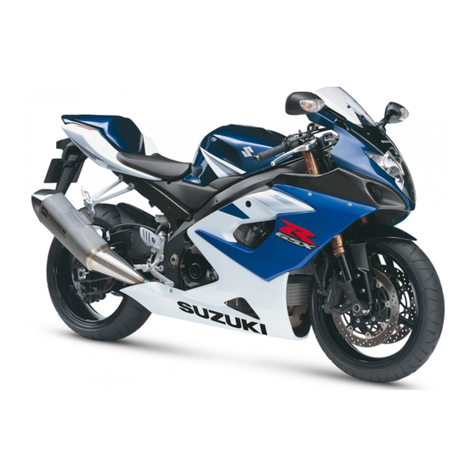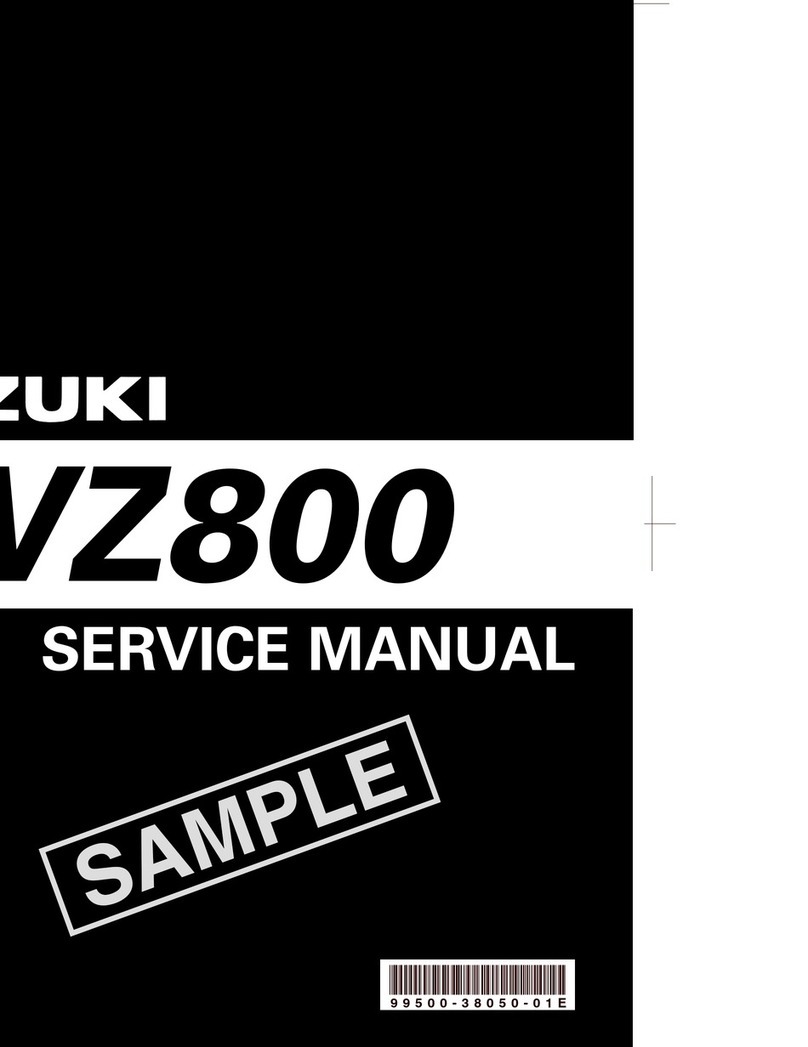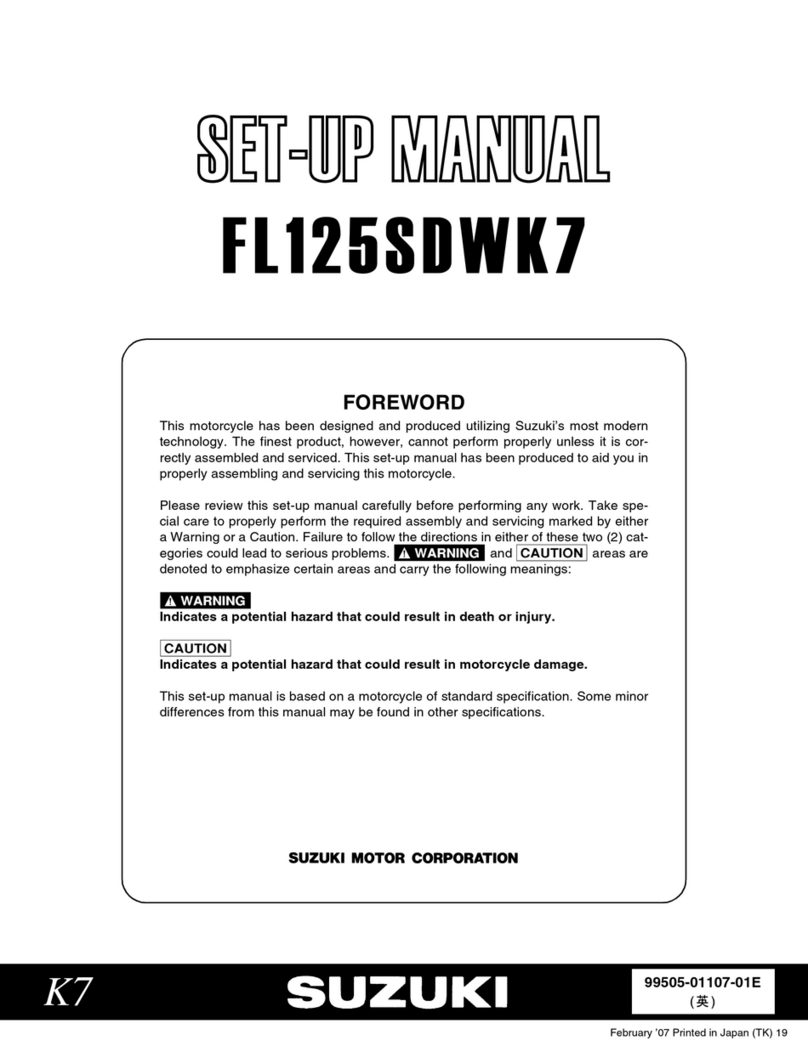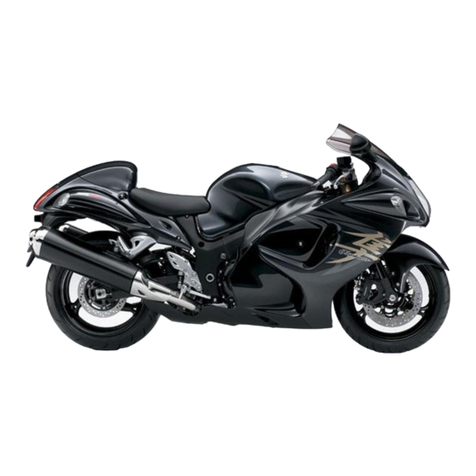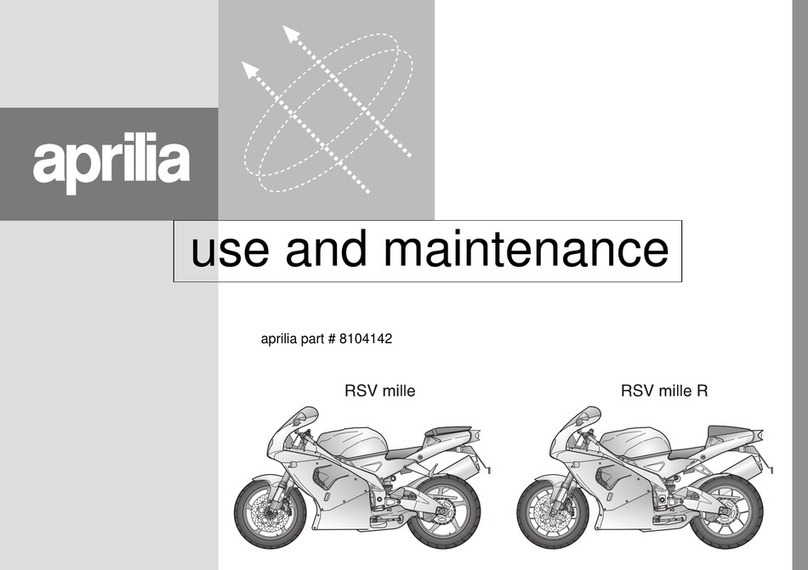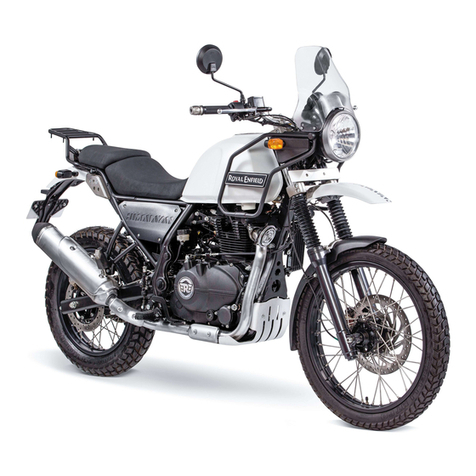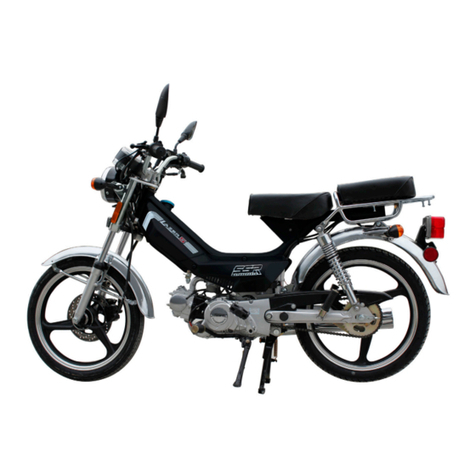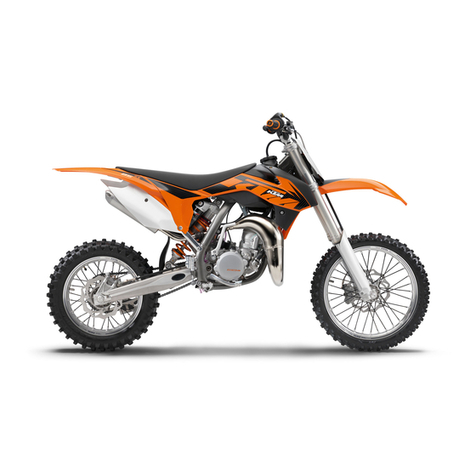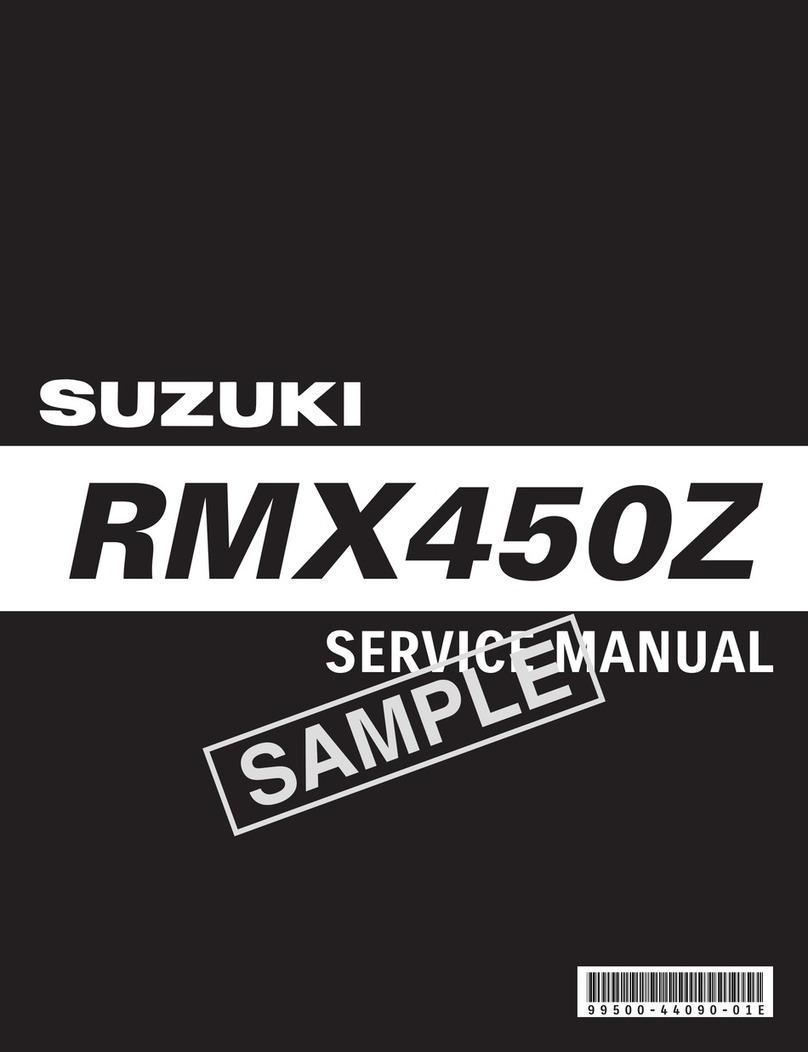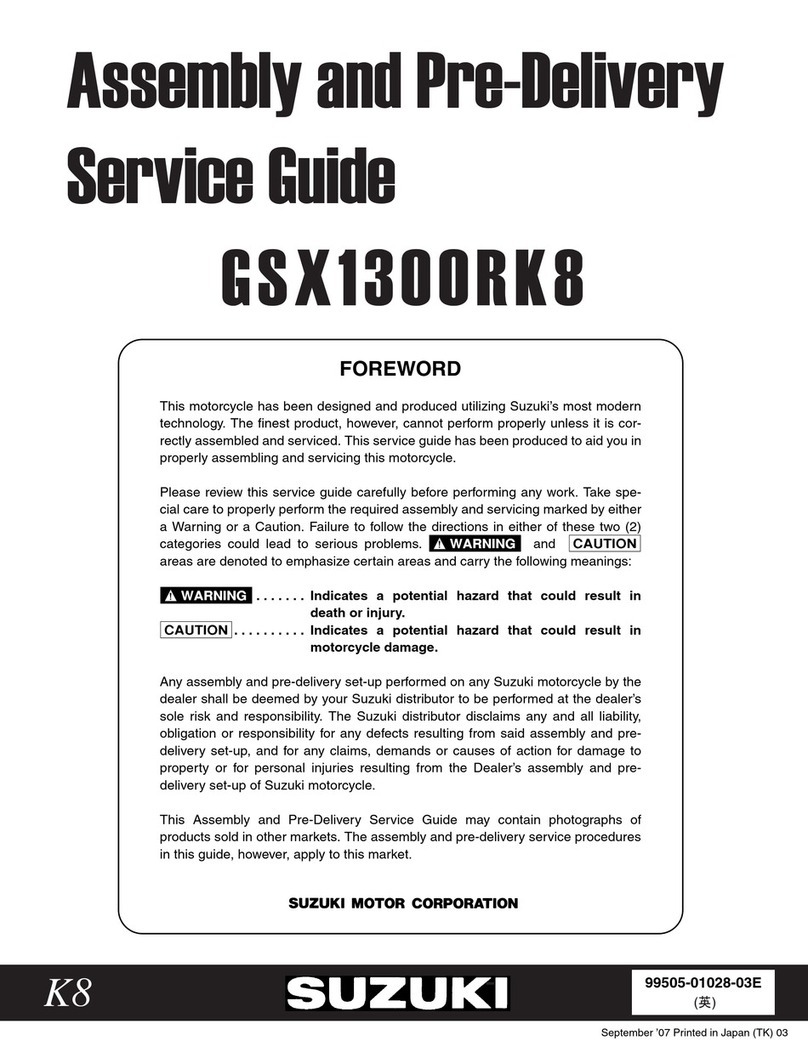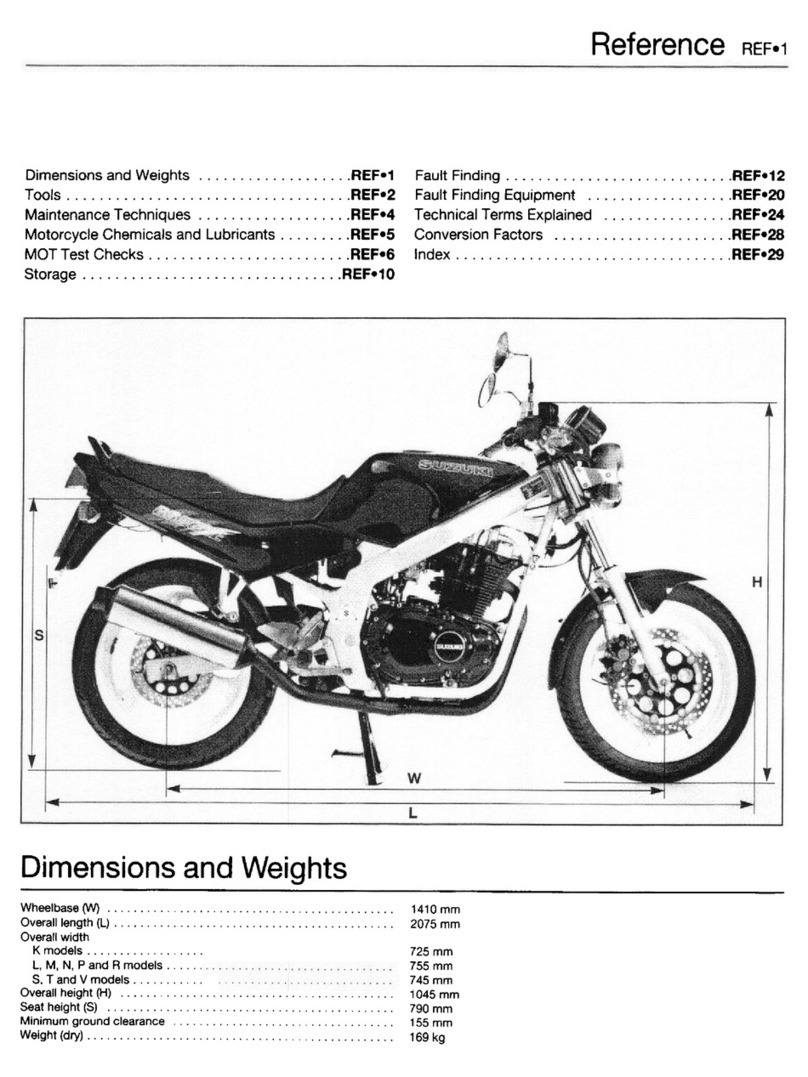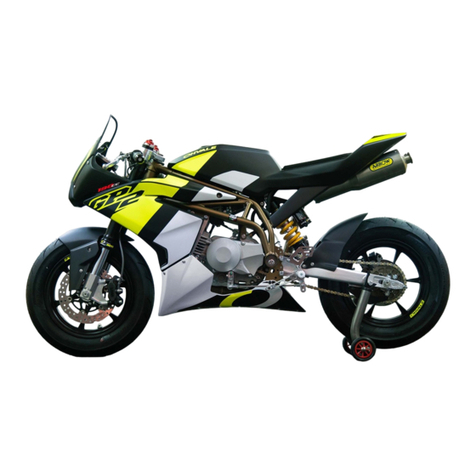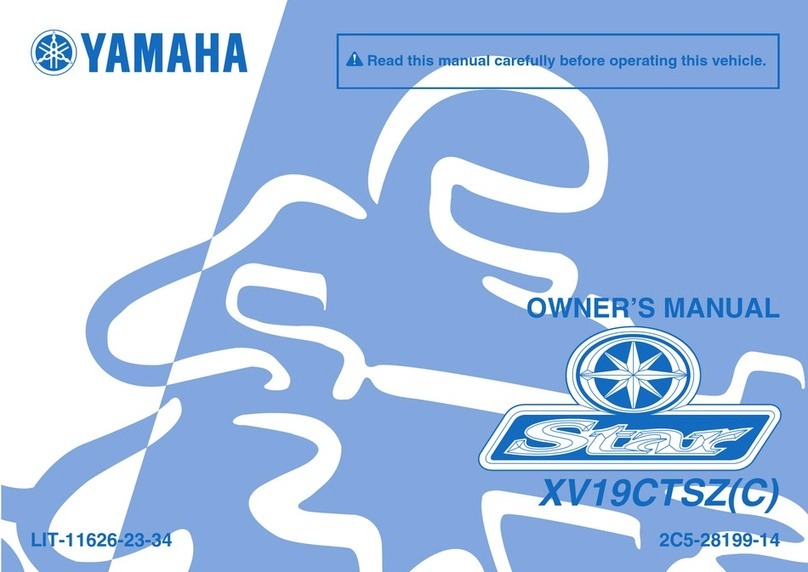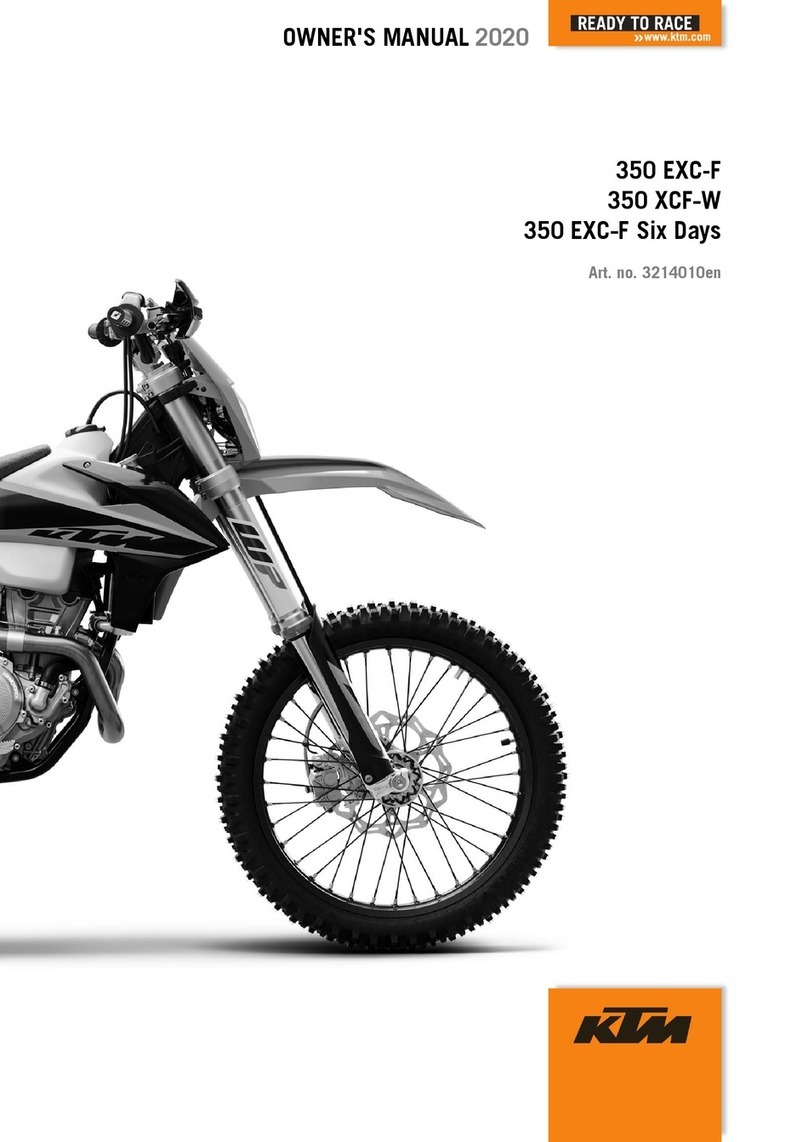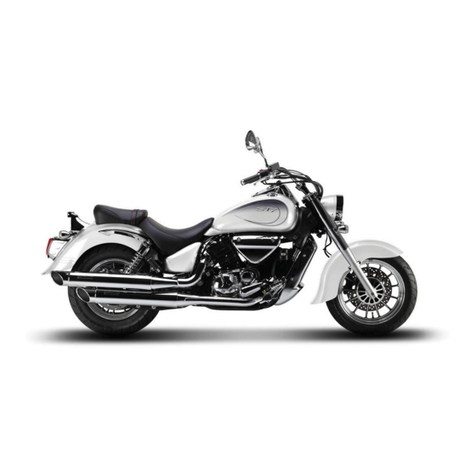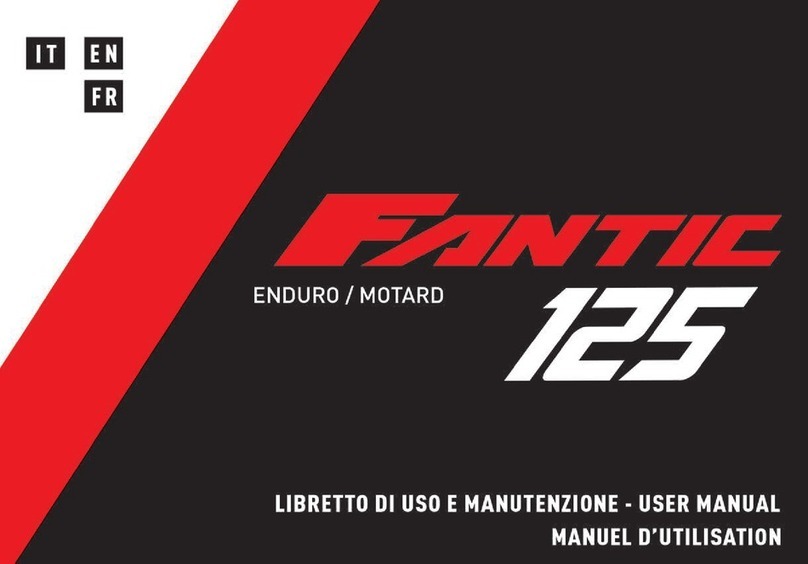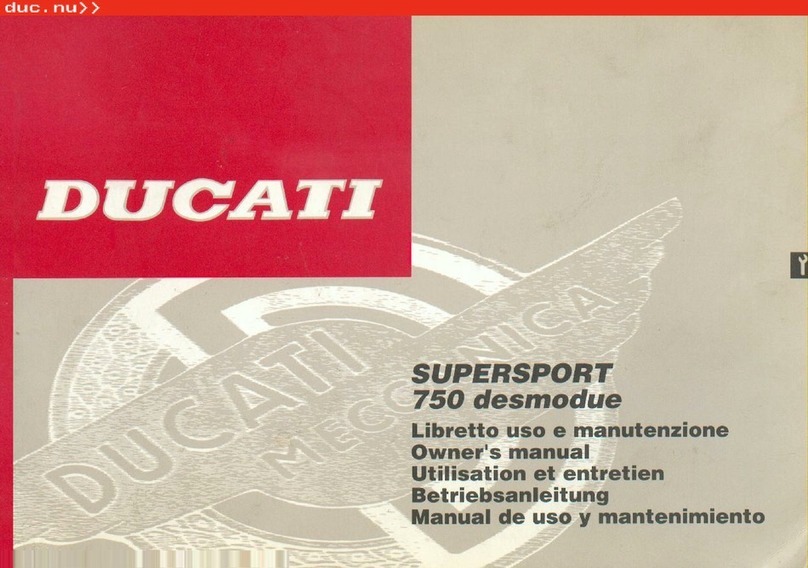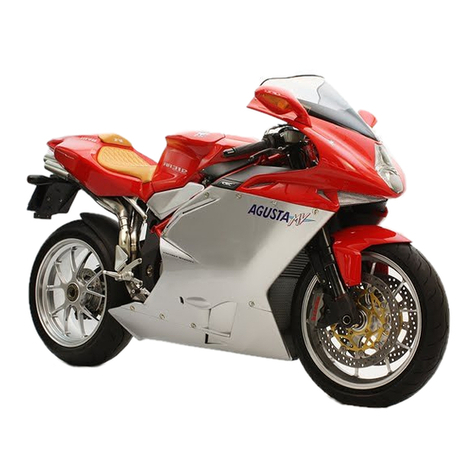BE
STREET
SMART
Alw;lys tlr:r:d speed limits, local
IdWS,
and the basIc rules of the
IOdd. Set a good example for oth-
ers by demonstrating a courteous
attitude and a responsible riding
style
CONCLUSION
Traffic, road and weather condi-
tions vary. Other motorists'
actions are unpredictable. Your
motorcycle's condition can
change. These factors can best
be dealt with
by
giving every ride
your full attention.
Circumstances beyond
your
con-
trol could lead to an accident.
You
need to prepare for the unex-
pected by wearing a helmet and
other protective gear, and learn-
ing emergency braking and
swerving techniques to minimize
the
damage
to you and your
machine.
The best way to learn basic riding
skills and evasive maneuvers or
refresh your own riding skills is to
take one of the courses offered by
the Motorcycle Safety Foundation
Your Suzuki dealer can help you
locate the fundament;11 or
advanced riding skills course
nearest you. or owners III ttH' USA
can call toll free
1H()()
,1'11>
l);';'
I
Good riolrHj
Oil
yl)lll
IH'W
~;II/llkll
ADDITIONAL
CONSIDERATION
WHEN
RIDING
OFF-HIGHWAY
Off-highway riding calls for off-
highway protective gear
In
addition to the reasons cited
above for wearing a helmet and
eye protection on the street, the
trail presents its own hazards
Visibility and trail conditions can
vary greatly from section to sec-
tion and season to season. These
changes are sometimes unpre-
dictable, and even an experienced
rider can have an accident. There
may be branches hanging over
the trail at eye level. Wear a hel
met and eye protection every time
you ride.
Wear protective clothing when
you ride. Avoid loose clothes or
scarves, which could get caught
in
moving parts. Abrasion injuries
can be minimized by wearing pro-
tective clothing including gloves
strong boots that fit over the
ankle, long pants, and a long
sleeve shirt or jacket. Experi
enced riders often wear a kidney
belt and chest or back protector
for additional comfort and protec
tlon.
Carrying a Passenger, Off-Road
Although your Dual Sport motor-
cycle is equipped
to
carry a pas-
:;nnger, carrying a passenger or
c;lrgo while riding
in
rough terrain
could be hazardous. Carrying a
pdssenger or strapping cargo to
ItH~
passenger seat can greatly
Il:duce your ability to balance and
:,I(:er the motorcycle and deal
wllh quickly changing off-road
I ;ollditions. Ride at a reduced
:;p(~ed
and limit your off-road
Ildlng to smooth, level surfaces
wilen carrying a passenger or
I :drgo.
Use the buddy system
~;tli1re
the fun of a good off-road
IIde. A riding partner can also be
II
great help if one of you gets
:drclnded or injured. If none of
your friends rides off-highway, ask
your Suzuki dealer how to go
Ithout joining a club. If your friends
do
ride, you can all join a club or
:,Idrt one of your own.
Obstacles come with the
territory
Negotiating obstacles is a normal
part, and often the most fun and
challenging part, of off-highway
riding, Scan the areas ahead.
You
may come upon naturally-occur-
ing obstacles such as ruts,
bumps, trees, low branches, blind
corners, or sudden dropoffs.
You
may encounter animals, other rec-
reational vehicles, horseback rid-
ers, or hikers. The sooner you
notice potential obstacles and
trail-sharing needs, the sooner
you can plan your actions accord-
ingly.
Remember: Practice on level
ground
Before you begin riding off-high-
way,
you should find a good place
to practice the skills you need to
ride safely. Review the Motorcycle
Safety Foundation's
'Tips
and
Practice Guide for the Off-High-
way Motorcyclist" Handbook sup-
plied with this owner's manual (for
owners
in
USA). This special
handbook contains a variety of
safety tips, helpful hints, and prac-
tice exercises that can increase
your riding enjoyment and safety.
1-6 1-7



